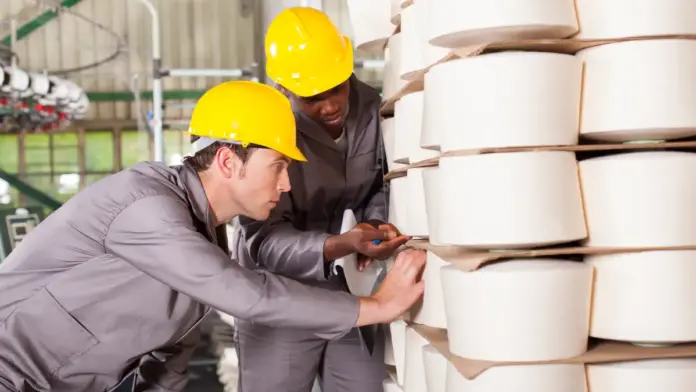Significant breakthroughs in heat-resistant textile development, revolutionizing their applications across diverse industries, result from recent advancements in material science. Continuously exploring new materials and fabrication techniques to enhance the thermal performance, durability, and flexibility of these textiles are engineers and researchers; this paves the way for their widespread adoption in various fields.
Protective Clothing for Hazardous Work Environments
Heat-resistant textiles play an indispensable role in ensuring worker safety and well-being within hazardous work environments like firefighting, metalworking, and chemical processing. The heat-resilient fabrics used to create protective clothing form a crucial barrier against various thermal hazards: flames; radiant heat; hot surfaces – thereby mitigating potential injuries or damages. Designed for comfort, mobility, and breathability while withstanding extreme temperatures; these specialized garments offer optimal protection without compromising on the wearer’s ease of movement or atmospheric comfort.
Innovative Materials and Fabrication Techniques
A diverse range of materials–aramid fibers, fiberglass, silica and ceramic-based fabrics–forms the foundation for developing heat-resistant textiles. Each material brings unique properties to the table: high-temperature resistance; flame retardancy; mechanical strength. These traits render them suitable for specific applications. Advanced fabrication techniques—namely weaving, knitting, and coating—facilitate the production of textiles with tailored properties and performance characteristics: a testament to innovation in this field.
Multi-layered Composite Structures
Many heat-resistant textiles, in pursuit of optimal heat resistance and thermal insulation, integrate multi-layered composite structures. These combinations may include diverse materials and layers with varied properties—such as insulating layers; reflective coatings; flame-resistant barriers. Composite textiles harness the synergistic effects of these multiple layers to offer heightened protection against an extensive array of thermal hazards.
Industrial Furnaces and High-Temperature Environments
In industrial settings–especially those grappling with high-temperature environments like furnaces, kilns and foundries–heat-resistant textiles stand as crucial players. Their utility spans insulation; heat shielding; and personnel protection: they shield workers and equipment from extreme heat, radiant energy, and even molten metal splashes. Heat-resistant fabrics commonly in the form of a fire blanket: these emergency safety devices smother small fires and shield individuals from both flames and heat.
Flexible and Lightweight Design
Modern heat-resistant textiles, despite their impressive heat-resistance properties: they are engineered specifically for wearer comfort–lightweight and flexible. Advanced weaving techniques coupled with innovative material compositions allow the creation of these superior thermal protectors; not compromising on flexibility or dexterity is a key aim in their design. This guarantee—workers performing tasks safely and effectively even amidst challenging environments—is what sets them apart from conventional options.
Durability and Longevity
Heat-resistant textiles, in addition to withstand extreme temperatures, must also demonstrate durability and longevity for the industrial user’s rigorous rigors. Rigorous testing methods under simulated conditions allow engineers and manufacturers to evaluate textile performance; this ensures that they meet strict safety standards as well as regulatory requirements. Investing in enduring heat-resistant textiles offers companies a way not only to boost workplace safety but also mitigate accident risks and injuries significantly.
Environmental Sustainability
Sustainability’s escalating importance in material design and manufacturing fuels a burgeoning emphasis on the development of environmentally friendly heat-resistant textiles. Concurrently, researchers probe renewable and biodegradable materials along with eco-friendly production processes to limit the environmental impact imposed by such fabrics. Companies that prioritize sustainability can harmonize their safety objectives with larger environmental goals; this contributes significantly towards fostering an enduringly sustainable future.
Continuous innovation and evolution mark the future of heat-resistant textiles, driven by enhanced safety, performance, and sustainability demands. These fabrics play a vital role in safeguarding workers and equipment from high-temperature environment hazards–from industrial furnaces to protective clothing. The field of workplace safety continues its transformation through advancements in material science, fabrication techniques; design principles also contribute significantly towards progress across diverse industries: all these factors shape tomorrow’s landscape for heat-resistant textile applications.



